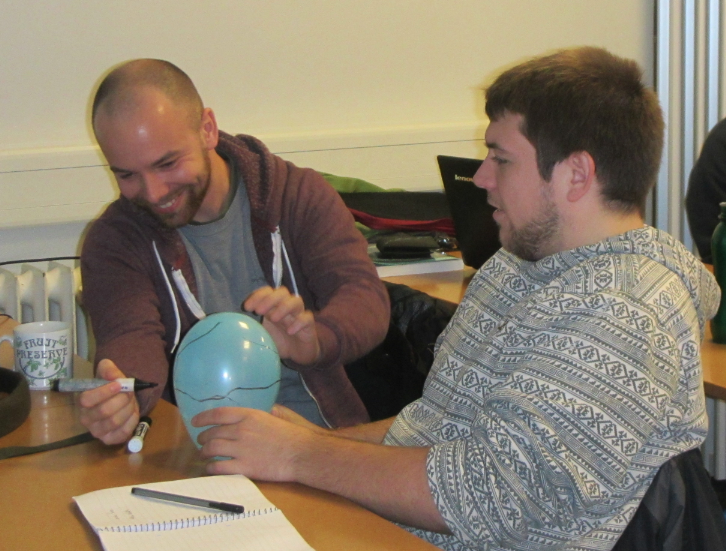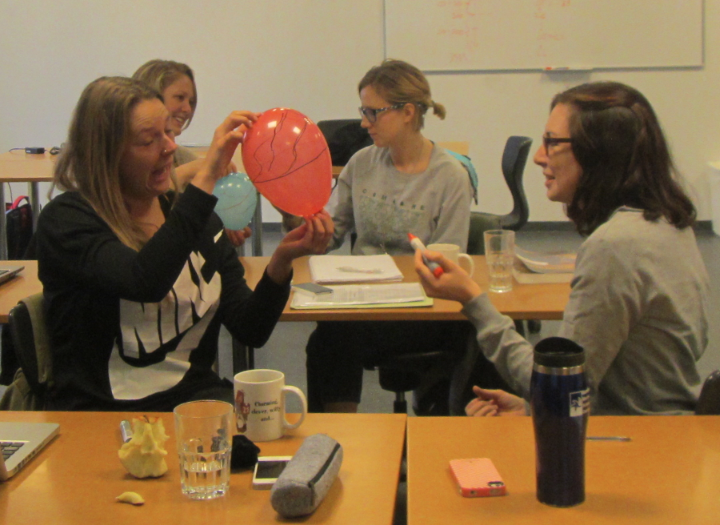Some demonstrations are really not as clever as we thought they might be.
We have talked about how to teach aspects of the Coriolis force recently, and just to spice it up: here is one thing that I tried that totally didn’t work out.
The idea was to have one student slowly and steadily turn a balloon around its axis to mirror the Earth’s spin, and another one drawing on the balloon with a sharpie.
The context was a class where many students didn’t have any physics background, and we wanted to understand atmospheric circulation, and why trade winds don’t blow straight north-south (or south-north on the Southern Hemisphere). And I still think that this demonstration kind of works for this specific purpose.
The problem though: If you have a balloon and a sharpie, drawing one single trajectory and going “oh, I got it! So that is why the trade winds have a velocity component to the west!” (like I naively had imagined) is NOT what happens.
What happens instead is that students will draw tons of trajectories. And not only the ones that, even in this overly simplified system, show what I wanted them to see. Nope. They will also draw following a constant latitude, and then be confused as to why Coriolis force doesn’t seem to be acting. Or draw south-to-north on the Northern Hemisphere, and be confused why things are being deflected to the left. (And don’t get me wrong: this is good! They should start exploring. And they should be finding the limitations of demonstrations!)
 Now. All of those issues that come up are things you can talk about and that can be explained. But I’m wondering whether this demo didn’t cause more harm than good, since the impression that might have stuck in the end is that Coriolis deflection only works under very specific circumstances, but most of the time it does not.
Now. All of those issues that come up are things you can talk about and that can be explained. But I’m wondering whether this demo didn’t cause more harm than good, since the impression that might have stuck in the end is that Coriolis deflection only works under very specific circumstances, but most of the time it does not.
So this is not a demonstration I would recommend!
